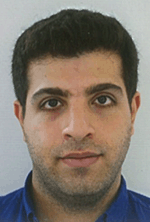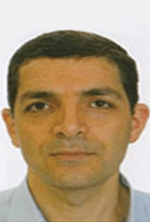Laboratory measurement of Biot’s coefficient and pore pressure influence on poroelastic rock behaviour
Hossein Salemi A C , Stefan Iglauer B , Ali Rezagholilou A and Mohammad Sarmadivaleh AA Department of Petroleum Engineering, Curtin University, Kensington, WA 6151, Australia.
B School of Engineering, Edith Cowan University, 270 Joondalup Drive, Joondalup, WA 6027, Australia.
C Corresponding author. Email: salemi.hossein@curtin.edu.au
The APPEA Journal 58(1) 182-189 https://doi.org/10.1071/AJ17069
Submitted: 3 December 2017 Accepted: 15 February 2018 Published: 28 May 2018
Abstract
Understanding rock behaviour as a function of pore pressure and confining pressure is crucial for petroleum and geomechanical analysis. Indeed, deformation and local stress variations within hydrocarbon reservoirs and their surroundings occur due to pore pressure changes. Theoretically, pore pressure changes coupled with stress variations in hydrocarbon reservoirs are a function of the Biot’s coefficient, the elastic properties of the rock and the reservoir shape. Thus, in this study, the Biot’s coefficient was measured as a function of porosity, permeability, and volumetric strain for five Gosford sandstone samples. A triaxial loading system was used to measure rock volumetric strain while pore pressure and confining pressure were varied. The constant deformation technique was employed for these experiments; i.e. the variation of pore pressure created a volumetric strain, and the confining pressure required to restore the original volumetric strain was measured to calculate Biot’s coefficient. For the investigated samples, measured liquid permeabilities were in the range of 7–10 mD and Biot’s coefficients were 0.84–0.91. This is consistent with similar investigations by other researchers in which measured Biot’s coefficients were in the range of 0.65–0.90. This study thus illustrates how liquid permeability and the Biot’s coefficient decrease as a function of confining pressure.
Keywords: permeability, triaxial test, volumetric strain.

Hossein Salemi is a PhD student at the Department of Petroleum Engineering, Curtin University, Western Australia. His current research focuses on 3D numerical/experimental simulations of sandstone reservoirs considering poroelasticity. He holds a Bachelor of Chemical Engineering from Azad University of Tehran and a Masters of Petroleum Engineering from Curtin University of Technology. |

Stefan Iglauer is an Associate Professor in the Department of Petroleum Engineering at Curtin University. His research interests are in carbon dioxide geo-storage, wettability, and multiphase flow through porous rock with a focus on atomic- to pore-scale processes. He has published more than 100 technical publications and holds a PhD in Material Science from Oxford Brookes University (UK) and an MSc in Chemistry from the University of Paderborn (Germany). |

Ali Rezagholilou is a registered professional civil/geomechanical engineer with a proven track record in research, consultancy, construction, and project management. He has over 15 years of experience in civil, petroleum, mining, and offshore engineering and significant experience in geotechnical or geomechanical challenges in a broad range of research and industry projects. |

Mohammad Sarmadivaleh is a lecturer at the Department of Petroleum Engineering, Curtin University and leads the Petroleum Geo-mechanics Group. He received his PhD from Curtin University in numerical and experimental studies on hydraulic fracturing in 2012. His research interests include hydraulic fracturing, sanding, geomechanical reservoir modelling, and carbon dioxide sequestration studies. He currently supervises 20 higher degree by research students and participates in academic and industrial research projects. |
References
Addis, M. A., Last, N. C., and Yassir, N. A. (1996). Estimation of horizontal stresses at depth in faulted regions and their relationship to pore pressure variations. SPE Formation Evaluation 11, 11–18.| Estimation of horizontal stresses at depth in faulted regions and their relationship to pore pressure variations.Crossref | GoogleScholarGoogle Scholar |
Alam, M. M., Borre, M. K., Fabricius, I. L., Hedegaard, K., Røgen, B., Hossain, Z., and Krogsbøll, A. S. (2010). Biot’s coefficient as an indicator of strength and porosity reduction: calcareous sediments from Kerguelen Plateau. Journal of Petroleum Science Engineering 70, 282–297.
| Biot’s coefficient as an indicator of strength and porosity reduction: calcareous sediments from Kerguelen Plateau.Crossref | GoogleScholarGoogle Scholar |
Biot, M. A. (1941). General theory of three‐dimensional consolidation. Journal of Applied Physics 12, 155–164.
| General theory of three‐dimensional consolidation.Crossref | GoogleScholarGoogle Scholar |
Biot, M. A. (1954). Theory of stress-strain relations in anisotropic viscoelasticity and relaxation phenomena. Journal of Applied Physics 25, 1385–1391.
| Theory of stress-strain relations in anisotropic viscoelasticity and relaxation phenomena.Crossref | GoogleScholarGoogle Scholar |
Biot, M. A. (1962). Mechanics of deformation and acoustic propagation in porous media. Journal of Applied Physics 33, 1482–1498.
| Mechanics of deformation and acoustic propagation in porous media.Crossref | GoogleScholarGoogle Scholar |
Biot, M. A., and Willis, D. G. (1957). The elastic coefficients of the theory of consolidation. Journal of Applied Mechanics 24, 594–601.
Blöcher, G., Reinsch, T., Hassanzadegan, A., Milsch, H., and Zimmermann, G. (2014). Direct and indirect laboratory measurements of poroelastic properties of two consolidated sandstones. International Journal of Rock Mechanics and Mining Sciences 67, 191–201.
| Direct and indirect laboratory measurements of poroelastic properties of two consolidated sandstones.Crossref | GoogleScholarGoogle Scholar |
Chen, Q., and Nur, A. (1992). Pore fluid pressure effects in anisotropic rocks: mechanisms of induced seismicity and weak faults. Pure and Applied Geophysics 139, 463–479.
| Pore fluid pressure effects in anisotropic rocks: mechanisms of induced seismicity and weak faults.Crossref | GoogleScholarGoogle Scholar |
Cheng, A. H. D., Abousleiman, Y., and Roegiers, J. C. (1993). Review of some poroelastic effects in rock mechanics. International Journal of Rock Mechanics and Mining Sciences & Geomechanics Abstracts 30, 1119–1126.
| Review of some poroelastic effects in rock mechanics.Crossref | GoogleScholarGoogle Scholar |
Detournay, E., and Alexander, H.-D. C. (1993) Fundamentals of poroelasticity. In ‘Comprehensive Rock Engineering: Principles, Practice and Projects’. (Ed. J. A. Hudson.) pp. 113–171. (Pergamon Press: New York, NY.)
Franquet, J. A. and Abass, H. H. (1999) Experimental evaluation of Biot’s poroelastic parameter: Three different methods. The 37th U.S. Symposium on Rock Mechanics (USRMS), 7–9 June, Vail, Colorado, American Rock Mechanics Association, ARMA-99-0349.
Geertsma, J. (1957) The effect of fluid pressure decline on volumetric changes of porous rocks. Society of Petroleum Engineers, SPE-728-G.
He, J., Rui, Z., and Ling, K. (2016). A new method to determine Biot’s coefficients of Bakken samples. Journal of Natural Gas Science and Engineering 35, Part A, 259–264.
| A new method to determine Biot’s coefficients of Bakken samples.Crossref | GoogleScholarGoogle Scholar |
Laurent, J., Bouteca, M. J., Sarda, J.-P., and Bary, D. (1993). Pore-pressure influence in the poroelastic behaviour of rocks: experimental studies and results. SPE Formation Evaluation 8, 117–122.
| Pore-pressure influence in the poroelastic behaviour of rocks: experimental studies and results.Crossref | GoogleScholarGoogle Scholar |
Orlic, B., Wassing, B. B. T., and Geel, C. R. (2013) Field scale geomechanical modeling for prediction of fault stability during underground gas storage operations in a depleted gas field in the Netherlands. In ‘47th U.S. Rock Mechanics/Geomechanics Symposium, 23–26 June, San Francisco, California’.
Qiao, L. P., Wong, R. C. K., Aguilera, R., and Kantzas, A. (2012). Determination of Biot’s effective-stress coefficient for permeability of Nikanassin sandstone. Journal of Canadian Petroleum Technology 51, SPE-150820-PA.
| Determination of Biot’s effective-stress coefficient for permeability of Nikanassin sandstone.Crossref | GoogleScholarGoogle Scholar |
Rice, J. R., and Cleary, M. P. (1976). Some basic stress diffusion solutions for fluid-saturated elastic porous media with compressible constituents. Reviews of Geophysics 14, 227–241.
| Some basic stress diffusion solutions for fluid-saturated elastic porous media with compressible constituents.Crossref | GoogleScholarGoogle Scholar |
Roshan, H., Sari, M., Arandiyan, H., Hu, Y., Mostaghimi, P., Sarmadivaleh, M., Masoumi, H., Veveakis, M., Iglauer, S., and Regenauer-Lieb, K. (2016). Total porosity of tight rocks: a welcome to the heat transfer technique. Energy & Fuels 30, 10072–10079.
| Total porosity of tight rocks: a welcome to the heat transfer technique.Crossref | GoogleScholarGoogle Scholar |
Salem, H. S. (2001). Determination of the acoustic coupling factor of Biot’s theory of elasticity, using in situ seismic measurements. Energy Sources 23, 917–936.
| Determination of the acoustic coupling factor of Biot’s theory of elasticity, using in situ seismic measurements.Crossref | GoogleScholarGoogle Scholar |
Salemi, H., Nourifard, N., Rezagholilou, A., Iglauer, S., and Sarmadivaleh, M. (2017a) Acoustic approach to determine the Biot factor of sandstone using true triaxial cell (TTSC). In ‘Proceedings of One Curtin International Postgraduate Conference (OCPC) 2017 Miri, Sarawak, Malaysia, December 10–12, 2017’.
Salemi, H., Rezagholilou, A., Asadi, S., Iglauer, S., and Sarmadivaleh, M. (2017b) Poroelastic effects of pore pressure-stress coupling on fault reactivation risks during gas injection. In ‘51st U.S. Rock Mechanics/Geomechanics Symposium, San Francisco, California, USA, ARMA-2017-0356’.
Skempton, A. W. (1961) Effective Stress in Soils, Concrete and Rocks, in Selected Papers On Soil Mechanics, pp. 106–118.
Streit, J. E., and Hillis, R. R. (2004). Estimating fault stability and sustainable fluid pressures for underground storage of CO2 in porous rock. Energy 29, 1445–1456.
| Estimating fault stability and sustainable fluid pressures for underground storage of CO2 in porous rock.Crossref | GoogleScholarGoogle Scholar |
Terzaghi, K. (1943) ‘Theoretical soil mechanics.’ (John Wiley & Sons, Inc.: New York)
Todd, T., and Simmons, G. (1972). Effect of pore pressure on the velocity of compressional waves in low-porosity rocks. Journal of Geophysical Research 77, 3731–3743.
| Effect of pore pressure on the velocity of compressional waves in low-porosity rocks.Crossref | GoogleScholarGoogle Scholar |
Wang, H. (2000) ‘Theory of linear poroelasticity with applications to geomechanics and hydrogeology.’ (Princeton University Press: Princeton, NJ.)


